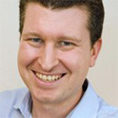by Richard Hollis
Neck pain is the second most common complaint seen by chiropractors in practice2. The neck supports the weight and movement of your head and with the amount of driving, computer work and other daily activities that most of us do, it is not surprising that problems occur.
Neck pain can be caused by the long-term effect of poor posture from bending, repetitive lifting, manual work or trauma such as whiplash. Some neck problems result in pressure on the nerves running into the arms, leading to arm or hand pain and occasionally changes in arm and hand sensation such as pin and needles or numbness.
 At the Broadgate Spine Centre there is an interdisciplinary team approach to all spine and joint problems. If a patient contacts us with neck pain and have not been referred already they are directed in the first instance to a chiropractor for an initial assessment to decide which approach to care is most suitable.
At the Broadgate Spine Centre there is an interdisciplinary team approach to all spine and joint problems. If a patient contacts us with neck pain and have not been referred already they are directed in the first instance to a chiropractor for an initial assessment to decide which approach to care is most suitable.
The initial assessment consists of a history of the neck problem, details of the past medical history, along with a physical examination including relevant orthopaedic and neurological tests. This determines if the patient is appropriate for treatment with a chiropractor, or whether a referral to another member of the Broadgate team is appropriate, such as to the rheumatologist for an inflammatory disease or the spinal surgeon for a surgical assessment.
If treatment with a chiropractor is a deemed best then there may still be “co-management” to ensure fast and full recovery with one of the other Broadgate team members, most commonly the GP for help with pain relief or the physiotherapist for rehabilitation exercises.
Before beginning any treatment the chiropractor will explain to you the type of problem you have and how long it typically it takes to resolve. You will also be told what treatment will consist of as there are a few techniques that can help and how they are employed depends on your problem.
Treatment for neck problems with a chiropractor at Broadgate commonly consists of a combination of the following evidence based techniques2, depending on the type of problem: Mobilisation and manipulation, soft tissue techniques such as stretching and trigger point therapy and sometimes acupuncture needling. Exercises (sometimes with input from one of our physiotherapists) and postural advice are also given to help recovery and to decrease the likelihood of reoccurrence.




